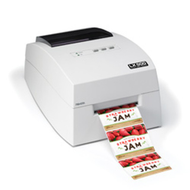Do I Need a Barcode for My Product to Sell Online?
13th Aug 2025
Key Highlights
- Most e-commerce platforms require barcodes. Selling on Amazon, Walmart, or Shopify typically demands a GS1-registered UPC or EAN to ensure product identification and listing approval.
- Barcodes improve product visibility and accuracy. They help with inventory management, reduce listing errors, and make your products searchable and scannable across platforms.
- UPC is standard in North America. For Canadian sellers, UPC-A barcodes issued by GS1 Canada are the most widely accepted and trusted option.
- Some marketplaces allow barcode exemptions. Platforms like Etsy or Facebook Marketplace may not require UPCs, but growth is limited without GS1-compliant barcodes.
- Choosing the right printer is essential. High-resolution inkjet or thermal printers ensure sharp, scannable barcodes that meet retail compliance standards.
- Only one barcode per unique product/SKU. Don’t reuse UPCs across variants—each version needs its own identifier for accurate tracking and platform acceptance.
- Third-party barcode vendors carry risks. Non-GS1 barcodes can be flagged or rejected by retailers, causing listing delays or brand credibility issues.
- DuraFastLabel.ca supports Canadian sellers. From GS1-ready printers to professional software, DuraFast helps you print compliant UPC labels with ease.
If you’re planning to sell products online, whether on Amazon, Walmart, Shopify, or any major e-commerce platform, you’ve probably asked: Do I really need a barcode? The short answer is: yes, in most cases.
Barcodes, specifically UPC (Universal Product Code) barcodes, are essential for product identification, cataloging, and inventory management. Platforms like Amazon require a valid, GS1-registered barcode to list your product, while others use barcodes to track orders, sync inventory, and ensure accurate shipping. Without a barcode, your product may be invisible in search results or flagged for listing errors.
In this section, we’ll explain why barcodes matter for online sales, how they streamline operations, and what happens if you try to list products without them.
What are Barcodes and Their Importance for Online Sales?
When launching a product online, one of the most frequently asked questions by sellers is: “Do I need a barcode for my product?” In almost all cases, the answer is yes.
Barcodes serve as globally recognized identifiers that enable marketplaces, fulfillment centers, and point-of-sale systems to track and distinguish your product from others accurately. Especially in the Canadian market, where most major e-commerce platforms adhere to GS1 standards, barcodes are more than a convenience; they’re a necessity for visibility, compliance, and operational efficiency.
From inventory syncing to multi-channel listings, a barcode enables your product to function smoothly within the digital retail ecosystem. Without it, you're likely to face listing rejections, shipping confusion, and even legal concerns around product identification.
Why Are Barcodes Essential for Online Retailers in Canada?

In Canada, selling online without a barcode significantly limits your product’s reach and credibility. Retail giants like Amazon.ca, Walmart.ca, and Loblaws require valid UPC (Universal Product Code) barcodes for all listed products, typically sourced from GS1 Canada, the only globally recognized issuing body in the country.
Here’s why barcodes are essential:
-
Product authentication: Barcodes verify the identity of your product and link it to your brand, helping retailers and marketplaces ensure consistency and prevent duplication.
-
Inventory management: They allow seamless tracking across warehouses and sales channels, critical for platforms with real-time stock visibility.
-
Compliance: Many retailers enforce GS1-compliant UPCs as part of their onboarding requirements. Failing to comply can result in delisting or delayed product launch.
-
Multi-channel selling: If you plan to expand beyond your website to Amazon, Shopify, or brick-and-mortar stores, a valid barcode ensures compatibility across all systems.
What are the Types of Barcodes Used for Online Products?
Understanding which barcode type best suits your product is crucial for meeting platform requirements, minimizing listing errors, and ensuring global compliance. Here's a breakdown of the most common types used in e-commerce.
1. UPC vs. EAN: Which Is Right for Your Product?
UPC (Universal Product Code) is a 12-digit numeric barcode widely used in Canada and the U.S., while EAN (European Article Number) is a 13-digit version commonly used internationally. If you’re selling primarily in North America, UPC-A is the standard choice. For global or European markets, EAN-13 is generally preferred.
Most online marketplaces accept either format, but ensure that GS1 issues your product identifiers to avoid duplication or listing issues.
2. What is the Role of GTINs and Other Barcode Formats?
GTIN (Global Trade Item Number) is the umbrella term for UPCs, EANs, and other product identifiers like GTIN-14 (used for outer cases) or GTIN-8 (for small items). Platforms like Amazon use GTINs as a universal reference for cataloguing products.
Other formats like Code 128 or DataMatrix are used more for logistics and internal tracking, not for point-of-sale or online listings. Stick with UPC or EAN (GTIN-compliant) for selling online.
3. What are the Platform Requirements for Barcode Types?
Each marketplace has its own rules:
-
Amazon Canada requires a valid GS1-issued UPC or EAN (Global Trade Item Number, or GTIN). Products without one may need brand registry or exemption.
-
Walmart.ca and Best Buy Canada also require GS1-verified UPCs.
-
Shopify, while more flexible, still encourages use of barcodes for seamless integration with inventory apps and POS systems.
Pro tip: Avoid using free or third-party-generated barcodes not tied to your brand, as they often get flagged or rejected by major platforms.
How to Create UPC Barcodes with BarTender?
While having a GS1-issued barcode is essential, designing and printing those barcodes accurately is just as important. That’s where BarTender by Seagull Scientific comes in — the industry-leading barcode label software trusted by Canadian businesses of all sizes.
Whether you're a startup labeling your first product or an enterprise managing a catalog of SKUs, BarTender Starter and BarTender Professional make it simple to create, print, and manage GS1-compliant UPC barcodes.
Why Choose BarTender for Barcode Creation?
-
Ease of Use: Drag-and-drop interface with intelligent wizards to guide you through creating UPCs, EANs, QR codes, and more.
-
GS1 Support Built-In: Preloaded templates and barcode formats compliant with GS1 standards help avoid formatting issues.
-
Scalability: BarTender grows with your business — from simple desktop printing to enterprise-wide label management.
-
Seamless Integration: Easily connects to Excel, SQL, or inventory software for batch printing and automation.
Available Editions via DuraFastLabel.ca:
BarTender Starter – Workstation + Unlimited Printers
-
Ideal for small businesses starting out with barcoding and label design.
-
CAD $289/year subscription
-
Includes unlimited printer support and Standard MSA.
BarTender Professional – Workstation + Unlimited Printers
-
Perfect for growing businesses needing more advanced layout, serialization, and database integration capabilities.
-
Also includes Standard MSA.
Download BarTender 30-Day Free Trial
-
Try before you buy — explore the full power of BarTender’s barcode design tools without commitment.
With BarTender software and DuraFastLabel.ca’s printing solutions, Canadian sellers can confidently create and manage professional-grade UPC barcodes that meet retailer and platform requirements.
Do You Legally Need a Barcode to Sell Online in Canada?
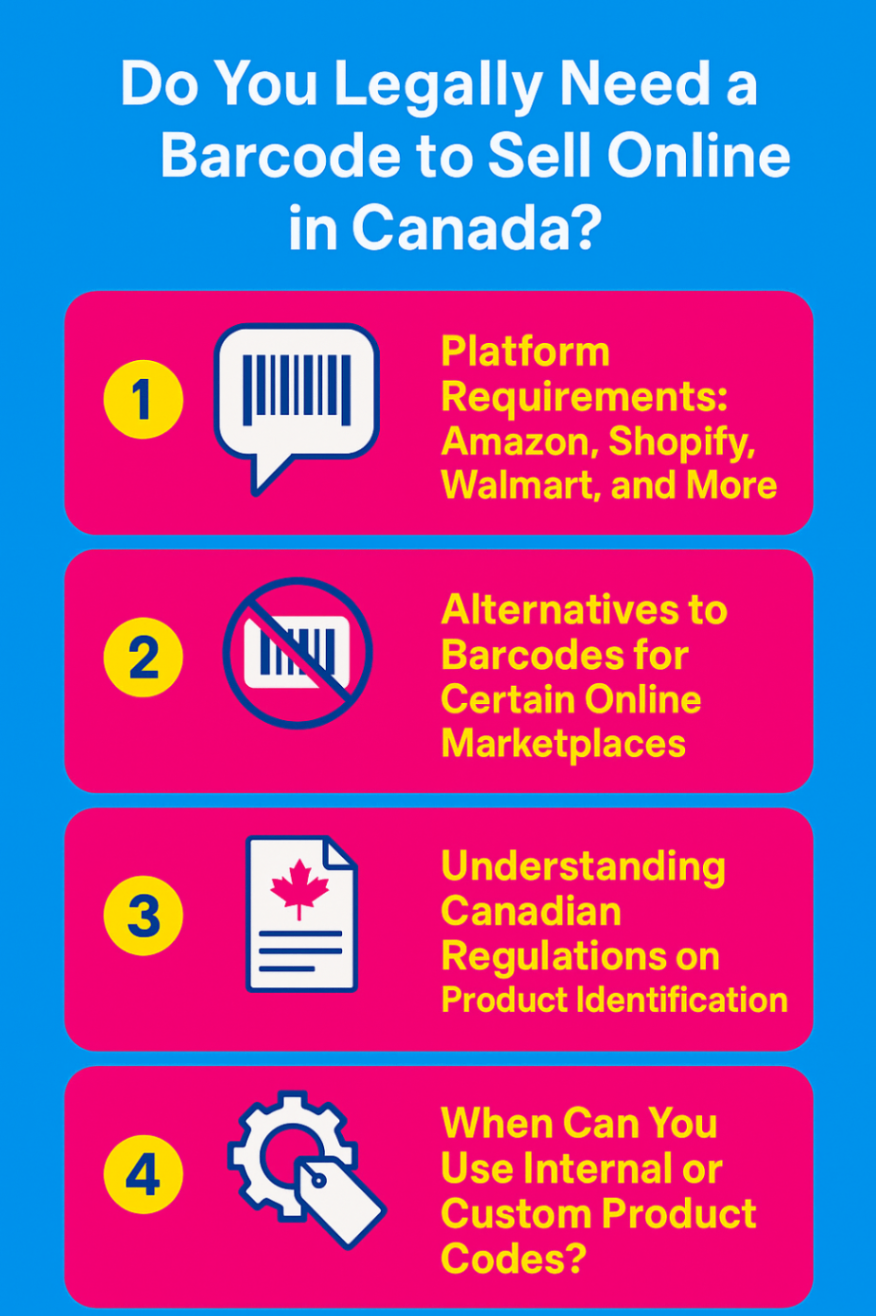
Barcodes are more than just black-and-white lines, they’re critical for product identification, inventory management, and listing accuracy across online marketplaces. But are they legally required in Canada for online sales? The answer depends on where and how you sell. Below, we break down the legal expectations, platform requirements, and alternatives.
1. Platform Requirements: Amazon, Shopify, Walmart, and More
Most major Canadian e-commerce platforms require barcodes for product listings:
-
Amazon.ca mandates GS1-registered UPC or EAN barcodes for most product categories. Listings without proper GTINs can be suppressed unless you’re approved for a GTIN exemption or part of Amazon Brand Registry.
-
Walmart Canada also expects sellers to use GS1 barcodes to ensure accurate listings and seamless supply chain integration.
-
Shopify doesn’t require barcodes to sell through your storefront, but if you connect to external marketplaces or POS systems, UPCs are highly recommended.
Having a barcode aligned with GS1 Canada standards is crucial if you want to achieve broad platform access and retail compliance.
2. Alternatives to Barcodes for Certain Online Marketplaces
Some niche or peer-to-peer marketplaces don’t require barcodes:
-
Etsy, for example, focuses on handmade and vintage goods, allowing sellers to list items without UPCs or GTINs.
-
Facebook Marketplace and Kijiji also don’t require standard barcodes since listings are more classified-style.
However, these platforms offer limited scalability. If you're planning to grow your brand or enter big-box retail, starting with GS1-compliant barcodes gives you future flexibility and credibility.
3. Understanding Canadian Regulations on Product Identification
Canada does not have a legal mandate requiring barcodes for all online products. However, industry standards, particularly those set by GS1 Canada, are enforced by retailers and marketplaces. These standards ensure:
-
Global traceability
-
Accurate product listings
-
Efficient inventory tracking
-
Bilingual labelling support (critical in Quebec)
Although not mandated by the Canadian government, failing to comply with industry standards can still result in delisting or rejection by major online platforms.
4. When Can You Use Internal or Custom Product Codes?
If you manage a private online store through platforms like Shopify or WooCommerce, you can use internal SKUs or custom codes to manage inventory. These codes help you organize your backend systems but won’t be accepted on platforms like Amazon or Walmart.
Use internal codes for operational purposes only, and pair them with GS1 barcodes if you intend to scale across marketplaces or retail partners. This hybrid system provides internal flexibility and external credibility.
Choosing the Right Printer for Your Barcode Labels
The key to high-quality barcodes lies not just in your label design or software, but also in the printer you choose. Below, we’ll walk through some of the best printers for barcode labels, from entry-level desktop models to high-performance industrial options.
1. Primera LX500 Colour Label Printer

The Primera LX500 is a compact, entry-level inkjet label printer ideal for small businesses, startups, and craft sellers. It offers excellent print quality with vibrant colours and works well for short runs.
Key Features:
-
Print technology: Inkjet
-
Resolution: 4800 dpi
-
Max label width: 4.25 inches
-
USB 2.0 connectivity
-
Built-in label cutter
Pros:
-
Extremely high print resolution for small text and barcodes
-
Ideal for product labels with logos or colour branding
-
Compact and easy to use
Cons:
-
Slower print speed for larger batches
-
Higher cost per label compared to thermal printers
2. Afinia L502 Colour Label Printer
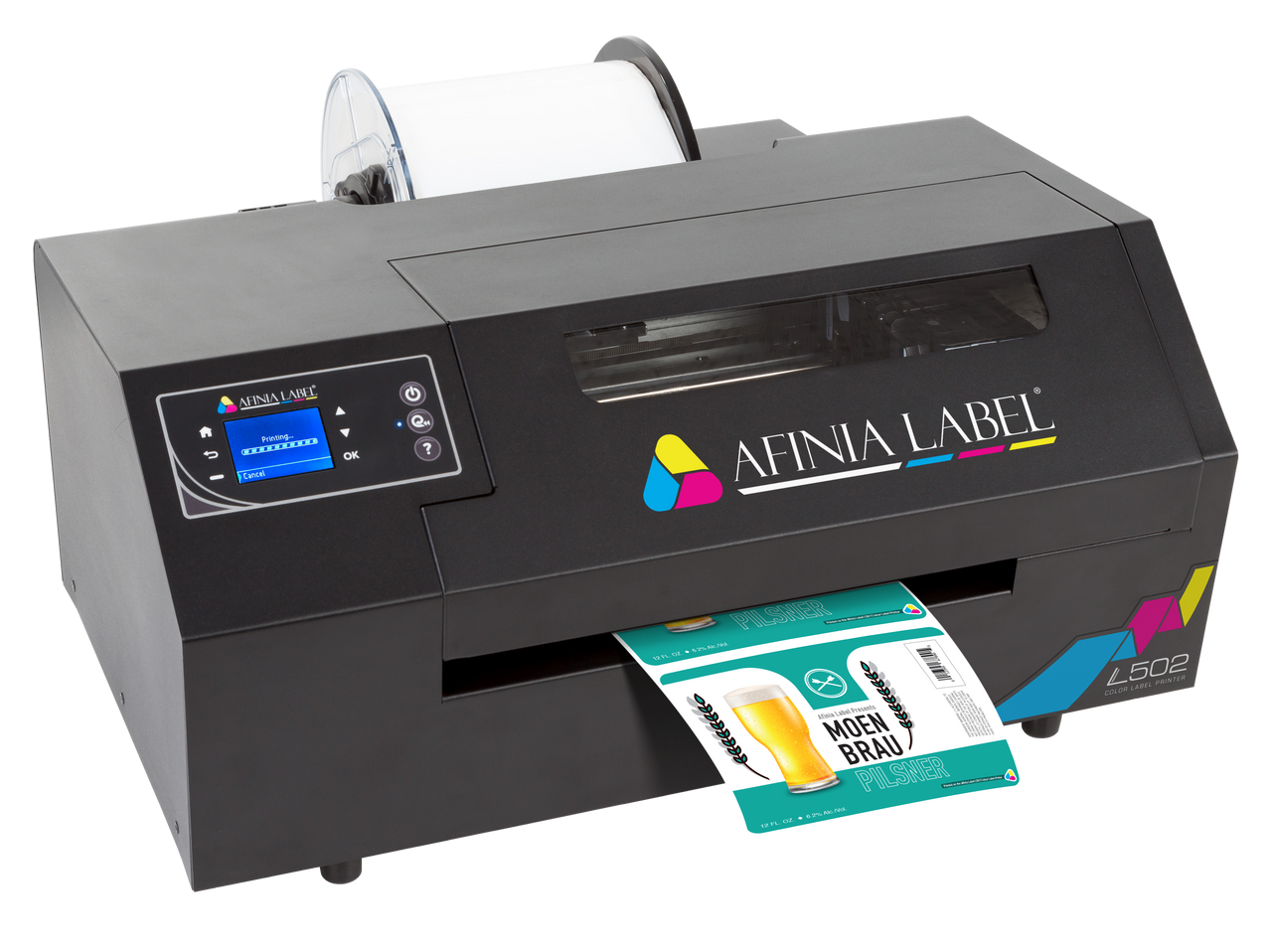
The Afinia L502 is a mid-range inkjet label printer that strikes a balance between vivid full-colour labels and rugged durability. It uses separate pigment-based inks, making it ideal for environments where moisture resistance matters.
Key Features:
-
Print technology: Inkjet (pigment or dye)
-
Resolution: Up to 4800 dpi
-
Max label width: 8.5 inches
-
Supports both dye and pigment cartridges
-
USB and Ethernet connectivity
Pros:
-
Crisp, durable prints ideal for retail or cosmetics
-
Handles high-volume jobs better than entry-level inkjets
-
Versatile ink options
Cons:
-
Requires more maintenance than thermal printers
-
Bulkier than LX500
3. Printronix T800 4" Wide, 300 dpi Thermal Transfer Desktop Printer | T830-100-0
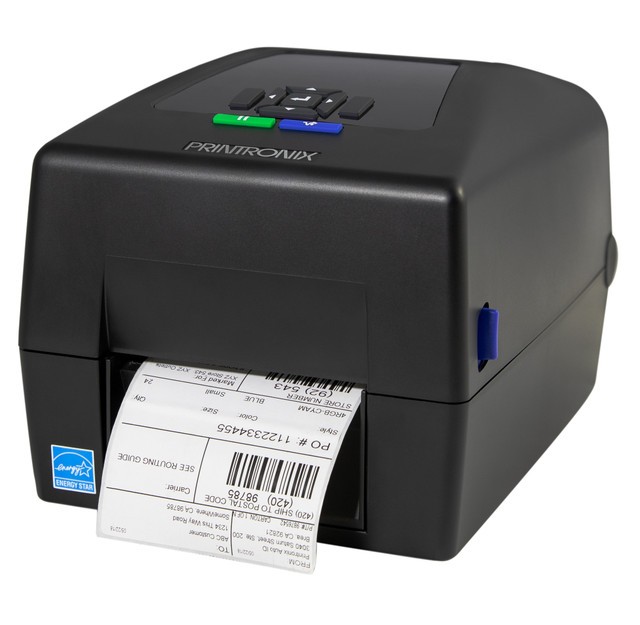
For businesses that need durable, long-lasting barcode labels, the Printronix T800 is a workhorse. With thermal transfer printing and 300 dpi resolution, it's perfect for high-volume environments like warehouses and manufacturing.
Key Features:
-
Print method: Thermal transfer
-
Resolution: 300 dpi
-
Print speed: Up to 8 ips
-
Connectivity: USB, Ethernet, Wi-Fi options
-
Enterprise-level management tools
Pros:
-
Great for printing small barcodes with sharp edges
-
Reliable for continuous or bulk printing
-
Works in harsh industrial environments
Cons:
-
More expensive upfront
-
Not suitable for full-colour label printing
4. Godex DT2x 2" Direct Thermal Barcode Printer, 203 dpi, 7 ips

The Godex DT2x is a budget-friendly, compact thermal printer designed for narrow label applications such as shelf tags, asset labels, or pharmacy use.
Key Features:
-
Print method: Direct thermal
-
Resolution: 203 dpi
-
Max print width: 2 inches
-
Print speed: 7 ips
-
USB and serial interfaces
-
No ribbon required
Pros:
-
Small footprint, easy to install anywhere
-
Fast printing speed
-
Great for receipts or shipping labels
Cons:
-
Not ideal for barcodes requiring long-term durability
-
No colour or thermal transfer option
5. Godex DT4x 4" Direct Thermal Barcode Printer, 203 dpi, 7 ips
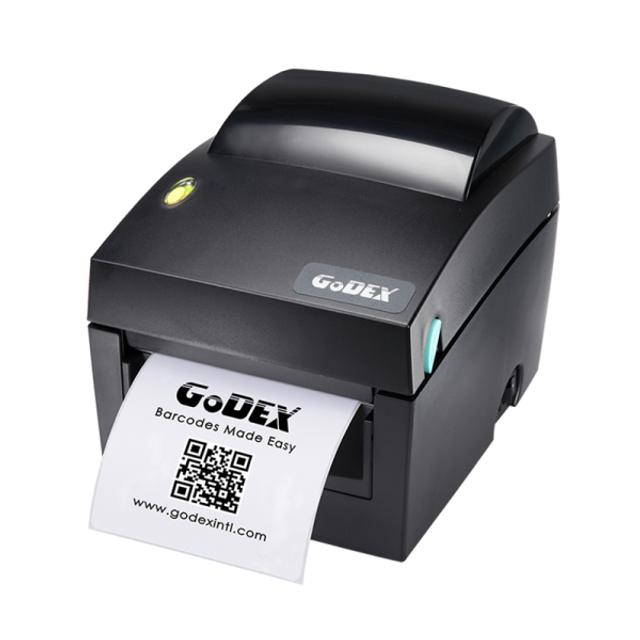
This model is a step up in size and versatility. The Godex DT4x is designed for shipping labels, barcode tags, and general retail needs where direct thermal printing is sufficient.
Key Features:
-
Print method: Direct thermal
-
Resolution: 203 dpi
-
Max print width: 4 inches
-
Print speed: 7 ips
-
Connectivity: USB, Ethernet
-
No ribbon required
Pros:
-
Great value for basic barcode printing
-
Fast and efficient for shipping operations
-
Plug-and-play installation
Cons:
-
Not suitable for high-humidity or outdoor environments
-
No support for thermal transfer ribbons
6. Godex GE300 4" 203 dpi Thermal Transfer Printer USB, RS232, LAN
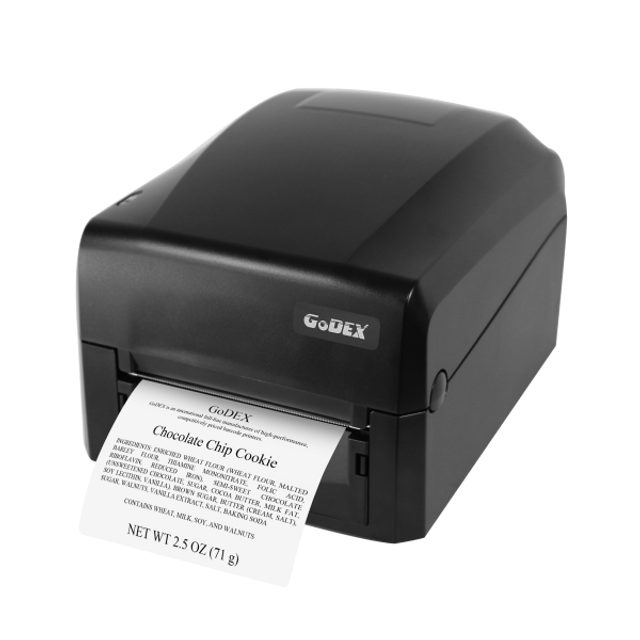
The GE300 offers both thermal transfer and direct thermal capabilities in a compact body, making it suitable for medium-duty barcode printing tasks.
Key Features:
-
Print method: Thermal transfer & direct thermal
-
Resolution: 203 dpi
-
Max print width: 4 inches
-
Interfaces: USB, RS232, LAN
-
Use 243ft (74m) length ribbons
Pros:
-
Dual-mode printing (for paper and synthetic labels)
-
Supports a wide range of applications from retail to logistics
-
Compact with a user-friendly design
Cons:
-
Lower resolution may affect very small barcodes
-
Not as fast as high-end models
7. Godex G500 4" Thermal Transfer Barcode Printer, 203 dpi, 4 ips
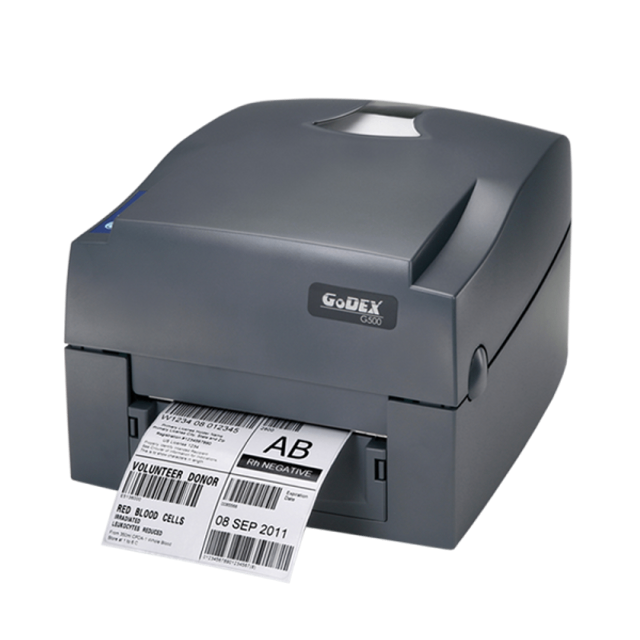
Godex G500 is known for its simplicity and reliability, perfect for medium-volume printing in retail or warehouse settings.
Key Features:
-
Print method: Thermal transfer & direct thermal
-
Resolution: 203 dpi
-
Max print width: 4 inches
-
Interfaces: USB, Serial, Ethernet
-
Uses 984 ft (300m) length ribbons
Pros:
-
Value for money
-
Reliable and easy to maintain
-
Durable for everyday printing needs
Cons:
-
Basic feature set, no LCD screen
-
Not ideal for ultra-fine detail
8. Godex ZX1200i 4" Thermal Transfer Barcode Printer, 203 dpi, 10 ips
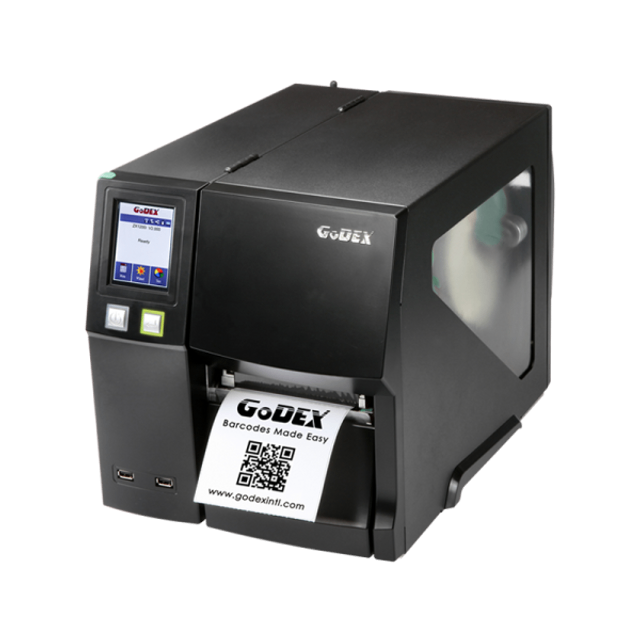
The ZX1200i is a high-speed, high-volume thermal transfer printer designed for industrial applications. It offers fast throughput and precise control for demanding environments.
Key Features:
-
Print method: Thermal transfer
-
Resolution: 203 dpi
-
Print speed: Up to 10 ips
-
Full-colour LCD display
-
USB, Serial, Ethernet connectivity
-
Uses 1476 ft (450m) length ribbons
Pros:
-
Ideal for manufacturing and distribution centers
-
Intuitive touch display
-
High-speed performance
Cons:
-
Industrial-size footprint
-
Premium pricing
Why Canadian Sellers Trust DuraFastLabel.ca for Barcode Printing Success
Suppose you're ready to bring your product to market with confidence. In that case, DuraFastLabel.ca is your go-to source for everything barcode-related, from label printers and barcode software to compliant label stock trusted across Canada.
At DuraFastLabel.ca, we specialize in helping Canadian businesses, big and small, print their own UPC, EAN, and QR code labels right from the office or warehouse. Whether you’re launching your first product on Shopify or scaling your listings on Amazon.ca, we offer GS1-compatible solutions that meet the requirements of all major platforms.
Conclusion
Whether you're selling on Amazon, eBay, Google Shopping, or in retail stores, having your own barcode isn’t just a technical step; it’s a crucial part of your brand's success. From the very first barcode scanned at checkout to today’s use of QR codes, barcodes remain the foundation of product identity.
By using official barcodes from GS1, you ensure every item reference number is unique to your brand, accurate, and accepted by distributors, retailers, and platforms worldwide. Assigning a barcode to each variation of each product, complete with a valid check digit, helps prevent errors and unlocks inventory automation.
An online tool can help you generate and verify your barcodes, but only GS1 codes give you long-term reliability. They’re trusted for coupons, loyalty programs, and even email and digital integrations. Plus, GS1 barcodes are readable by any scanner, from warehouse to checkout.
Frequently Asked Questions:
How do I obtain a barcode for my product in Canada?
To obtain a barcode in Canada, register with GS1 Canada. After applying, you’ll receive a unique Company Prefix to generate valid UPC barcodes. Most Canadian retailers require these codes and ensure product traceability, global compatibility, and compliance with GS1 standards across both retail and online sales platforms.
Can I use the same barcode for multiple products?
No, each product variation, such as size, colour, or type, requires a unique barcode. Using the same UPC for multiple items can confuse retailers, impact inventory systems, and lead to product rejection. Assigning a distinct UPC to every SKU ensures proper identification, smooth scanning, and accurate tracking across distribution and sales channels.
What are the costs involved in getting barcodes?
Obtaining barcodes through GS1 Canada involves an initial setup fee and an annual renewal fee. Costs vary depending on the number of products, starting at around CAD $150–$300 per year. Additional expenses may include barcode generation software, label printers, compliance testing tools, and label materials depending on your product packaging and distribution requirements.
Are there risks with using third-party barcode vendors?
Yes, using third-party vendors can lead to barcodes not linked to your brand. Many sell reused or non-GS1 codes, causing rejection by major retailers. This can delay product listings, hurt brand trust, and require costly relabeling. Only GS1 barcodes guarantee uniqueness, authenticity, and wide retail and e-commerce acceptance.
What happens if I sell online without a barcode?
Selling online without a barcode limits your product’s visibility. Platforms like Amazon and Walmart often require UPCs for listing approval. Without them, listings may be rejected or hidden from view. Barcodes also ensure accurate cataloging, inventory syncing, and searchability, crucial for sales performance and brand credibility in competitive online marketplaces.
